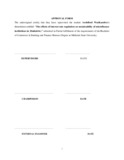Please use this identifier to cite or link to this item:
https://cris.library.msu.ac.zw//handle/11408/3184Full metadata record
| DC Field | Value | Language |
|---|---|---|
| dc.contributor.author | Warikandwa, Archiford | - |
| dc.date.accessioned | 2018-09-18T14:00:44Z | - |
| dc.date.available | 2018-09-18T14:00:44Z | - |
| dc.date.issued | 2018 | - |
| dc.identifier.uri | http://hdl.handle.net/11408/3184 | - |
| dc.description.abstract | Microfinance institutions services have continued to play a vital role in Zimbabwean economy. It is viewed as the provision of financial services to the poor and low income group. Microfinance Institutions in Zimbabwe have gained wide recognition since 1990’s for the role they play in providing financial services to low income households, and their contribution to poverty alleviation. Despite this crucial role, the interest rate charged by the MFIs in Zimbabwe have been relatively high ranging between 20%-30%. This has raised concerns with policymakers on how MFIs can fight poverty and fulfil their social mandate while charging borrowers interest rates that are higher than those offered by other financial institutions such as traditional commercial banks and SACCOs. The main objective of the study was to determine the effects of interest rate regulation and sustainability of MFIs in Zimbabwe. The study was guided by liquidity preference theory. The study used cross-sectional descriptive survey research design. The target population was 60 MFIs operating in Zimbabwe. The primary data was collected by the use of questionnaires whereas secondary data was collected by use of a survey sheet. Pretesting was done to determine the reliability and validity of the questionnaire. The data collected was analysed using Statistical Package for Social Sciences (SPSS). The study established that changes in interest rates by the monetary authorities affected MFIs sustainability. The Person correlation and ANOVA findings indicated that the relationship of interest rate and sustainability of MFIs is positive and statistically significant. This implies that decreasing the lending rate reduces the return on asset (ROA) thus deterring the sustainability of MFIs. The government and other policy makers should put in place better interest rates policies that will make MFIs sustainable. | en_US |
| dc.language.iso | en | en_US |
| dc.publisher | Midlands State University | en_US |
| dc.subject | Microfinance institutions | en_US |
| dc.subject | Zimbabwean economy. | en_US |
| dc.subject | Financial services | en_US |
| dc.title | The effects of interest rate regulation on sustainability of microfinance institutions in Zimbabwe | en_US |
| item.grantfulltext | open | - |
| item.fulltext | With Fulltext | - |
| item.languageiso639-1 | en | - |
| Appears in Collections: | Bachelor Of Commerce Banking And Finance Honours Degree | |
Files in This Item:
| File | Description | Size | Format | |
|---|---|---|---|---|
| FIRST DRAFT DISSERTATION-FINAL.pdf | Full Text | 1.03 MB | Adobe PDF |  View/Open |
Page view(s)
572
checked on Jan 20, 2026
Download(s)
742
checked on Jan 20, 2026
Google ScholarTM
Check
Items in MSUIR are protected by copyright, with all rights reserved, unless otherwise indicated.



